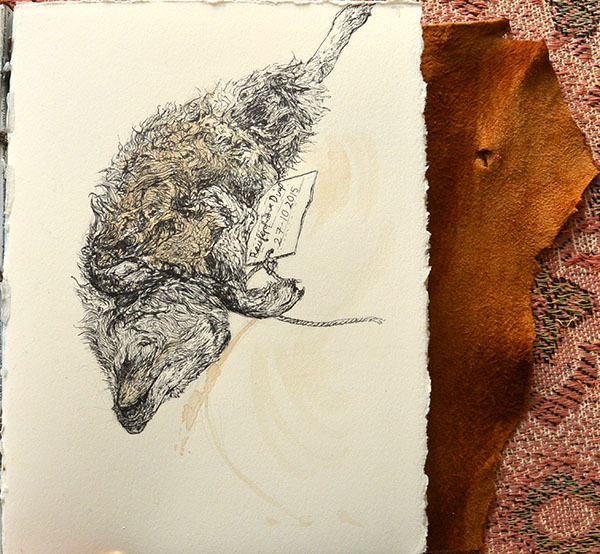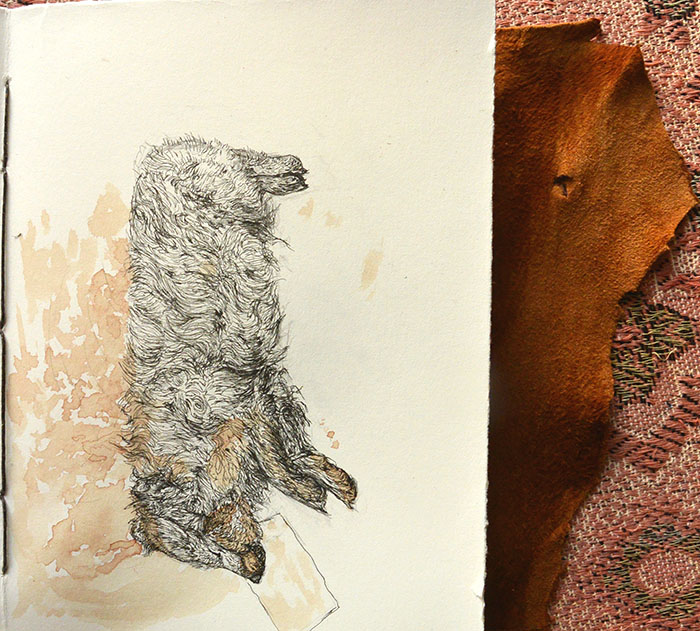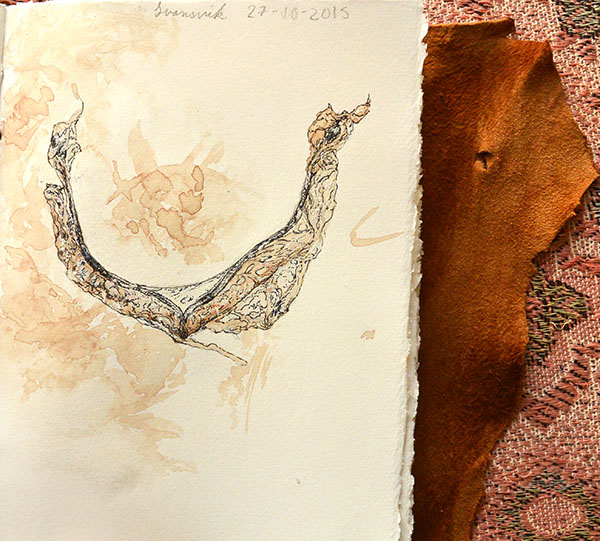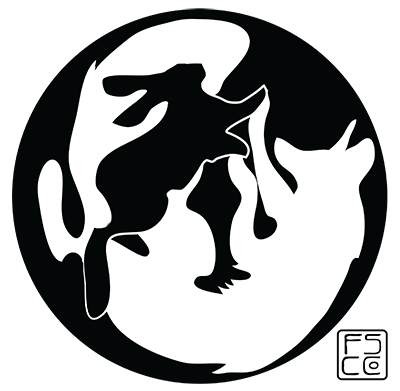Some sort of reproductive record is taken during the dissections of each fox; for a male the testes are removed and weighed and for a female the placental scars inside the uterus are counted. Outside of the breeding season, the male’s testes are only a third or a fourth as big. A female’s uterus, if she has never bred before, looks like a thin, semi transparent rubber band tucked away behind the other organs. Ester—the biologist doing the dissections—would cut a long incision across the lower abdomen and pluck out the thin uterus with one finger, holding it taut like a guitar string. In good humor she would say ‘it’s a virgin!’ almost every time.
Like the dormant testes, the band of tissue seems almost vestigial compared to a vixen that has been a mother. A uterus that’s carried a litter to term has placental scars, dark bands across the uterine horns that indicate the number of kits in the last litter. It’s hard to see in my illustrations, but one of the females had two full scars and one that was only half as big. The half scar, Ester told me, was probably from a fetus that had not been carried to full term.
The black band just to the right of the uterus' center is the half-scar indicating a fetus not carried to term
It’s interesting to look inside an animal and see the quiet dramas that have unfolded, to pull apart the fascia and take a permanent record of these lives that would otherwise be entirely ephemeral. The body is a diary more telling than most would give it credit for, and it makes me think of Annie Dillard describing the life of the weasel by Hollin’s Pond, “[whose] journal is tracks in clay, a spray of feathers, mouse blood and bone: uncollected, unconnected, loose leaf, and blown.”
Except we are collecting the pages of the fox’s journal, taking samples and notes and making translations in order to see what we might learn from the short history of each body passing under the knife.






